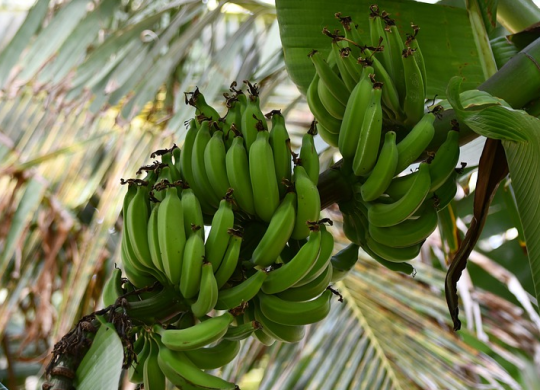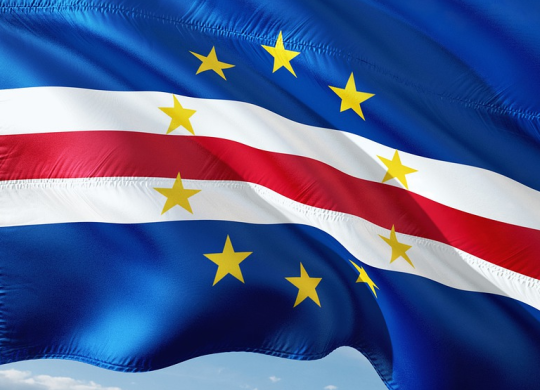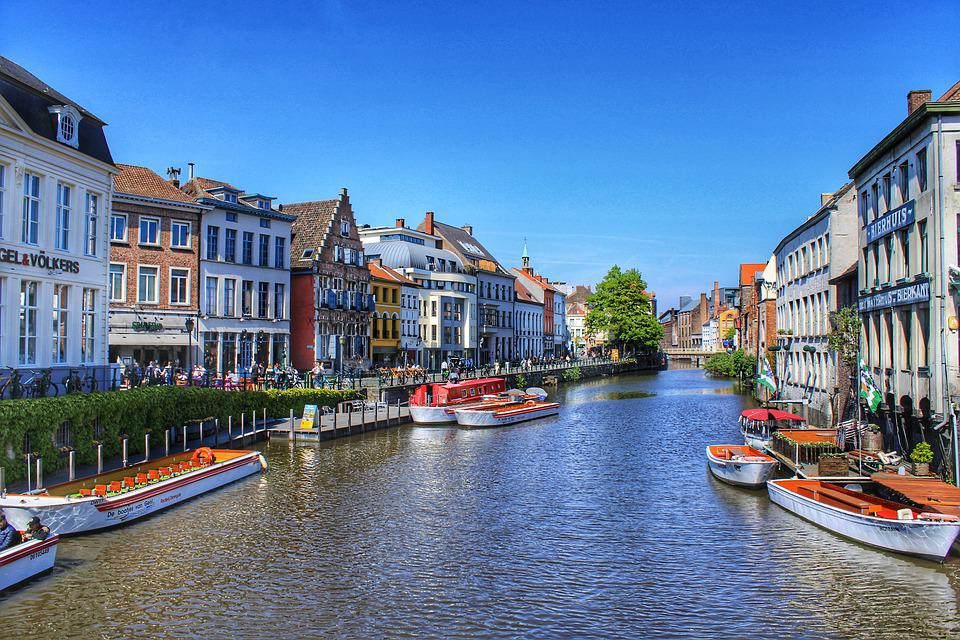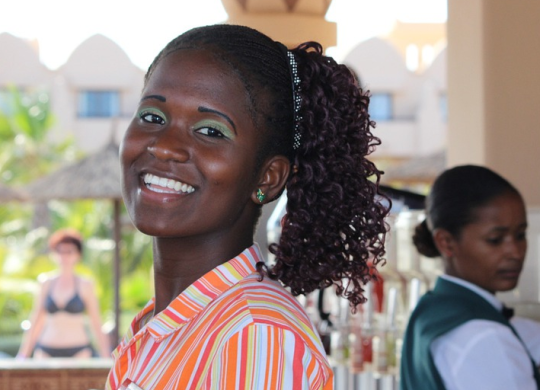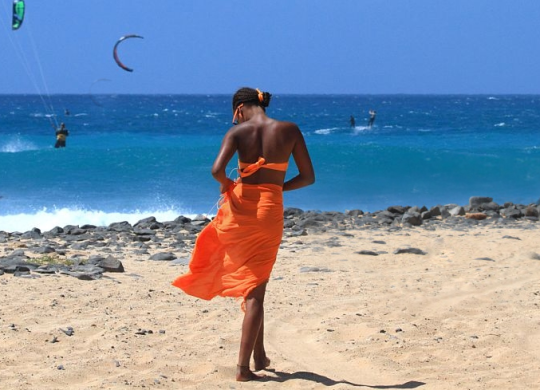
Cape Verde (or Cabo Verde) is a wonderland. Despite its colourful name, this archipelago lost in the waters of the Atlantic Ocean is not green at all, as its landscapes are volcanic and rocky. However, this does not prevent it from being an ideal alternative to more well-known resorts. This former Portuguese colony has everything one may need for a great vacation and an unforgettable trip.
Getting to know Cape Verde
History doesn’t say why the European colonizers called the islands "green" (verde). Yet there is an assumption that the islands were once covered with greenery and that the current landscape is the result of human activity. Or that it was given due to the azure water surrounding the archipelago: under certain conditions, it can sometimes really seem to be green.
However, Cape Verde today is one of the best tourist destinations in the world, because:
• Rich background of the islands' settlement, which dates back to the 15th century (until then, the archipelago was uninhabited), creates a unique culture that is a combination of Portuguese and Italian themes with the spicy flavour of Africa.
• The tourist slogan of the country is No stress. Therefore, everything is done here to make life and stay on the islands as relaxing and pleasant as possible.
• In fact, the whole year here is sunny, warm, dry, and not suffocating due to the winds from the continent.
• This is an ideal alternative to more famous resorts, as a high level of service, well-developed hotel infrastructure, snow-white beaches, gentle sea, and comfortable weather conditions coexist here with fairly moderate prices.
• The islands are also a place of great interest to fans of active recreation, as they are one the world's top 5 places for diving and are considered to be a great place for surfing, kiting, hiking, fishing, and ecotourism.
Moreover, each island has its peculiarities, which is why Cape Verde is called the country of 10 directions. A brief description of Cape Verde’s every part can be in a form of this guide:
• The largest island of the archipelago, Santiago, is a business and trade centre. The capital of the republic, the city of Praia, is located here. And also — a national park where 500-year-old baobabs and dragon trees (dragon trees) grow. Locals say that this island combines the landscapes of all its "siblings".
• The second largest isle of Sau Antoine beckons hikers and hang-gliders with its tropical vegetation-covered cliffs, canyons, and scenic ridges. In addition to the beautiful nature, here one can see the oldest lighthouse of the archipelago, and take a sip of authentic coffee and grog.
• Sal Island is the tourist mecca of Cape Verde. Here vacationers are awaited by hotels of various levels, white beaches, salt volcanic lakes, an intricate coastline, and the most opportunities for various water sports (diving, surfing, yachting, etc.).
• Boa Vista is called the island of dunes. It is recommended for fans of ATV trips and seekers of true African exoticism.
• Sao Vincente is the cultural capital of Cape Verde. It preserves the ancient traditions of the local population, as well as culinary and artistic heritage. The world-famous singer Sezaria Evora was also born here.
• Sau Nicolau is the only place in the archipelago with sufficient amounts of fresh drinking water. Therefore, it is the greenest place which has a waterfall, a considerable amount of exotic vegetation, rocks with ancient writings, and towns that have preserved many architectural monuments of the 18th and 19th centuries.
• The distant Mayu island was formed by a dormant volcano. It is a great place for those who want to relax by the sea in solitude, as the local white beaches are removed from highways and towns.
• The protected uninhabited island of Santa Lucia is awed with its space-like desert and mountain scenery.
• The island volcano of Foigu is the highest point of the archipelago. The area around the volcanic cone has been declared a nature reserve and is worth seeing for its quaint volcanic landscapes contrasting with brightly colored houses, and for unique black sand beaches.
• The smallest of the islands, Brava, is called Blooming because of its extremely rich vegetation. Due to the steep coastline and few settlements, it does not attract beach vacationers and is therefore a paradise for those who want to be alone with nature in peace.
Fun fact: you can determine the age of the islands by their topography. The old ones are flatter, mostly covered with beaches, while the young ones are high and rocky.

What to see in Cape Verde?
Travelers are often advised to choose one island and stay on it. This derives from the fact that the transport connection here is peculiar (not all islands are connected by direct flights), and therefore it is not cheap. However, a trip around Cape Verde is worth it.
The main points of the tourist program should include visits to:
• City of Mindela
The main city of Sao Vicente is the cradle of Cape Verde's morna musical style. Soulful chants were born from Portuguese fado but became so unique and distinctive that they were included in the list of intangible heritage of UNESCO. Everyone sings and dances here: in the evening, guests can enjoy the performances of street bands and ordinary people who decided to have a good time, visiting local clubs, music bars, and restaurants.
• Fort San Felipe (Santiago Island)
The ancient fort, built to protect the archipelago from pirate raids, still impresses with its strong walls, towers, and cannons. Next to this UNESCO world heritage site is a picturesque town and examples of ancient Creole architecture.
• Markets and shops of Sal Rey
Trade spots in the capital of the island of Boa Vista offer unique, authentic souvenirs from local artisans. Pay attention to wooden decorations, textiles, and tableware.
• Cabo Santa Maria
In 1968, a ship carrying gifts to supporters of the dictator Franco ran aground near the town of Sal Rey. The luxury items were removed, and the ship, after several attempts to tow it away, was left on the beach. Today, its skeleton against the background of a snow-white beach and blue water creates an exotic, somewhat dystopian landscape.
• The city of Palmeira
The capital of the island of Sal is a vivid port town. People come here for colonial architecture, restaurants with authentic cuisine, incredibly beautiful underwater caves and reefs, lava pools, a lake in the caldera of a 50-million-year-old volcano, and the first island settlement of Pedra de Yume.
• Viveiro Boatyard Ecopark (Sal Island)
The owner of the park set an ambitious goal: to grow a garden on a desert island. And in 15 years, she achieved remarkable results. 90% of the plants were grown on sand from seed. Water for irrigation is collected and provided by local hotels and restaurants. Electricity is provided by solar batteries. And they fertilize the plants with horse manure from the stables of the park.
Viveiro also has a mini-zoo where donkeys, parrots, peacocks, and other animals that have been abandoned by their owners are kept.
Fun fact: outside the cities of Sal, one can see real desert mirages. It may seem that there is water, although there are no water pools or oases on the island.
Climate
Cape Verde has a dry tropical climate and no change of seasons: it is warm and sunny all year round. The average annual temperature is 28-30C. From November to June it becomes windier, so surfers and yachtsmen flock here. In January and February, short-term light rains are possible (the exception is mountainous areas, where showers may occur).
FYI
• Cape Verde is quite tourist-oriented. Therefore"big", populated islands (Santiago, Sal, Sau Antoine) have well-developed hotel infrastructure. There are apartments and hotels, diving/yachting/surfing schools, equipment rent, swimming pools, animators, and European-level service. Even though the majority of tourists have not yet discovered Cape Verde, it is not crowded and the prices are very reasonable.
• The Internet is slow. Hotels usually have Wi-Fi, but it may not extend to the rooms (access from the room will require an extra charge). When using local SIM cards, the smartphone cannot be switched to modem mode (access to this option should be negotiated in the boutique when purchasing the card).
• Local population, the Creoles, are friendly, open-hearted, and unobtrusive. Unlike the mainlanders, they will not cling, flatter, beg or try to extort money from tourists.
• Official language here is Portuguese. The locals know it well, but in everyday life, they speak a mixture of Portuguese with the local dialect — Caboverdian.
• The local currency is the Cape Verde Escudo (CVE). It is better to exchange in banks, as hotels and airports offer an unfavorable exchange rate. Reverse exchange is not carried out here, so one should not exchange all the currency at once. Hotels, restaurants, and other establishments on the "tourist" islands usually accept cards. However, the cash reserve is a good idea.
• Due to the arid climate, agriculture is not very developed here, thus fruits and vegetables are often expensive. But seafood (crustaceans, tuna) is cheap and is the hallmark of the islands.
BTW in the town of Palameira on the island of Sal, there is a monument to the first person who caught tuna from the shore — the fisherman Tokelau. Before him, it was believed that fishing tuna from the shore was impossible.
• In addition to air, there is a ferry connection between the islands. But it is unstable due to the changeable "mood" of the Atlantic ocean.
Public transport is also not a constant thing, so it is most convenient to travel in a rented car.
• There are no dangerous animals or insects on the islands. The only representative of wild terrestrial fauna is small monkeys living in the few green areas of Cape Verde.
Yet the marine fauna of the archipelago is extremely rich. In the spring, one can observe the migration of humpback whales here. Also, there are companies on the islands of Sal and Boa Vista that offer tours to farms and areas which protect loggerhead turtles. When ordering a tour, make sure that the organizing company works with the State Protection Fund and has the appropriate permission.
Visa to Cape Verde
Cape Verde allows visa-free entry for citizens of 190 countries of the world (the period of stay varies from 30 to 90 days). However, they need e-Visa pre-registration, which is valid for the 4 largest airports: Sal, Praia, Sao Vincente, and Boa Vista.
Registration must be completed no later than 5 working days before the flight. However, it does not guarantee admission to the territory of the country: border control may ask to confirm the return flight and accommodation booking, as well as a bank statement certifying the tourist's so reliance. Tourists admitted to Cape Verde must pay an entry fee.
Representatives of 45 nationalities need a tourist visa to vacation in the Cape Verde Islands. It can be obtained at any representative office of the republic accessible to them. Alternatively, they can order the services of our agents.

